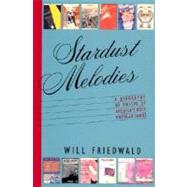
| Introduction and Acknowledgments | |
| Star Dust (1927) | p. 2 |
| The St. Louis Blues (1914) | p. 38 |
| Mack the Knife (1928) | p. 76 |
| Ol' Man River (1927) | p. 104 |
| Body and Soul (1930) | p. 142 |
| I got Rhythm (1930) | p. 180 |
| As Time Goes By (1931) | p. 212 |
| Night and Day (1932) | p. 242 |
| Stormy Weather (1933) | p. 276 |
| Summertime (1935) | p. 308 |
| My Funny Valentine (1937) | p. 348 |
| Lush Life (c. 1938) | p. 374 |
| Table of Contents provided by Blackwell. All Rights Reserved. |
The New copy of this book will include any supplemental materials advertised. Please check the title of the book to determine if it should include any access cards, study guides, lab manuals, CDs, etc.
The Used, Rental and eBook copies of this book are not guaranteed to include any supplemental materials. Typically, only the book itself is included. This is true even if the title states it includes any access cards, study guides, lab manuals, CDs, etc.
Excerpted from Stardust Melodies: The Biography of Twelve of America's Most Popular Songs by Will Friedwald
All rights reserved by the original copyright owners. Excerpts are provided for display purposes only and may not be reproduced, reprinted or distributed without the written permission of the publisher.